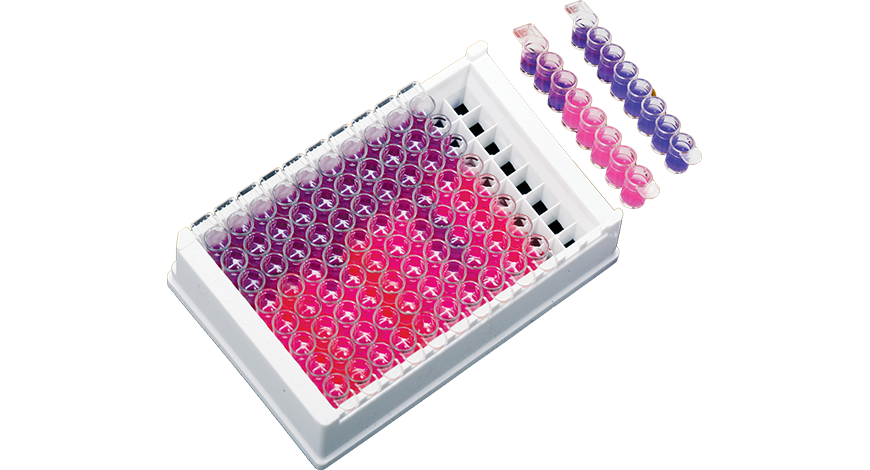Product Watch
HiMIC™ plate kit from HiMedia Laboratories

Antimicrobial susceptibility testing (AST) is a set of laboratory tests used by medical fraternities to decide which antimicrobial regimen is most successful for a certain patient. It helps evaluate therapeutic services given by hospitals, clinics, and national initiatives for the control and prevention of infectious illnesses on a broader scale.
Ease of accuracy and rapidness (EAR) of an AST is of prime importance in clinical scenarios. Better is the EAR of an AST, the results are reliable and reduce time lapse in the treatment. The persistency in AMR is reflected in the persistency in the need for better EAR in AST methods. So, AST methods are continuously evolving for better EAR. Disk-diffusion, well diffusion, and broth or agar dilution are classical and commonly used techniques involved in AST.
New development
To overcome the burden of anti-microbial resistance (AMR), a greater attention has been paid to antimicrobial activity screening and evaluating methods. Minimum inhibitory concentration (MIC) determination plays an essential role in selection of apt antibiotic therapy for the patients. Well diffusion and broth or agar dilution are the most used techniques for MIC evaluation. A joint EUCAST and CLSI subcommittee recently issued recommendations confirming that broth microdilution (BMD) is so far the only valid method for MIC determination.
Traditional BMD involves many steps. While conducting the experiments, a simple manual error may lead to the failure of the experiment. To reduce the risk, HiMedia has developed the HiMIC™ plate kit, which provides hassle-free broth microdilution method for determination of MIC.
The kit consisting of a 96-well microtiter plate, with detachable wells strip, HiMIC™ diluent, HiMIC™ incubation tray, HiMIC™ reading card and product insert for the guidance. Each detachable strip covers 7 or 11 two-fold dilutions, covering breakpoint scale, which helps in reliable interpretation for sensitive, intermediate, and resistance detection with easy visual inspection in compliance with CLSI and EUCAST guidelines. Detachable well strip is coated with gradient of antibiotics and growth medium, which releases upon rehydration. Each detachable well strip is given along with the antibiotic symbol at the top. HiMIC™ reading card is provided for easy interpretation of the MIC value by visible color change.
The kits are available with antibacterial and antifungal agents. Also, eight antifungal agents in a single-kit format are also available in our product range.
Advantages
- A breakthrough in the detection of MIC with ease and accuracy;
- Easy breakpoint-based visual evaluation;
- Hassle-free micro broth dilution;
- Quantitative analysis as per EUCAST and CLSI guidelines;
- Reliable interpretation for sensitive, intermediate, and resistance detection;
- 7 or 11 concentrations in a single strip covering breakpoint scale; and
- 12 or 8 tests per kit with detachable strips.
Outlook
With sustaining AMR, there is a need to provide skill-free, accurate, and cost-effective antimicrobial susceptibility-testing solutions for professionals in this area. Introducing microchip-based automations and the use of AI in precise interpretation of MIC values is a need of the current industry and clinics. Different microbes give different types of zones of clearance in MIC-strip methods. Its interpretation needs educating AI with a huge number of possible alternatives for apt output from automated systems. Parallel to this is accurate identification of AST-ID in microbes, which is also a need in the situation. The MALDI-TOF system, by itself, is an easy-to-use, repeatable, and high-throughput advanced machine for identification of the microbes up to species and sometimes up to sub-species level.












